ASUS ROG Maximus XIII Hero Review: Everything for Rocket Lake
by Gavin Bonshor on July 9, 2021 9:00 AM ESTVisual Inspection
The ASUS ROG Maximus XIII Hero follows the quintessential modern ASUS ROG design, with large black heatsinks dominating the board's PCB, areas of gunmetal grey accents including on the rear panel cover, and the extended chipset heatsink. There is a lot going on across the board, with multiple areas of integrated RGB LED lighting which includes the rear panel cover, and the rear panel cover. If that's not enough for users, ASUS does include three 3-pin addressable Gen 2 RGB headers, with one 4-pin Aura RGB header. Looking at cooling options, there's a total of eight 4-pin headers, which include two for CPU fans, one for a water pump, one for an AIO CPU cooler, three for regular chassis fans, and one for a high amperage fan.
Looking towards the lower portion of the ROG Maximus XIII Hero, and it has two full-length PCIe 4.0 slots that operate at both x16 and x8/x8, with a full-length PCIe 3.0 x4 slot along the bottom. In the middle of the two full-length PCIe 4.0 slots is a single PCIe 3.0 x1 slot. For storage, there are four M.2 slots in total, with the top slot operating at PCIe 4.0 x4, one PCIe 3.0 x4, and two with support for both PCIe 3.0 x4 and SATA M.2 drives. Each of the M.2 slots includes heatsink coverage, which blends in with the rest of the board's aesthetic. In the bottom right-hand corner are a total of six right-angled SATA ports, with support for RAID 0, 1, 5, and 10 arrays.
Located in the top-right hand corner of the board are four memory slots with support for up to DDR4-5333 memory. Users can install up to 128 GB across four slots, with each slot featuring support for 32 GB DDR4 UDIMMs. In addition to this, is a basic, yet functional overclockers toolkit. This consists of a Power (start) button, a flex key button which users can assign a function in the firmware, as well as a two-digit LED debugger.
The Maximus XIII Hero has a very capable power delivery, which includes an 8-phase (14+2) design which is using teamed power stages and is controlled by an Intersil ISL69269 PWM controller. For the CPU VCore section, ASUS is using fourteen Texas Instruments 95410RR 90 Smart Power stages, which are teamed in pairs for a maximum output of up to 1260 A for the CPU. On the SoC section, ASUS is again teaming its power stages, with two Texas Instruments 59880 70 A power stages. Overall the power delivery on the ASUS ROG Maximus XIII Hero is quite formidable.
Cooling the power delivery is a large and elaborate heatsink, with two heatsinks attached to the large metal rear panel cover. The heatsink combined has a lot of weight and mass to it, and underneath the rear panel cover is an electronic strip that has the rear panel covers integrated RGB LEDs. The imprints on the thermal pads show that the heatsinks are making a sound connection with the power delivery componentry.
Under a metal audio PCB cover is the board's integrated audio componentry. This consists of a SupremeFX ALC4082 HD audio codec, which is rebranded for ASUS by Realtek, with an ESS Sabre ESS9018Q2C DAC. Flanking the HD audio codec is an array of ten gold Japanese Nichicon audio capacitors, and the PCB itself is separated from the rest of the board's components and controllers. It's also worth mentioning that the HD audio codec has an EMI shield protecting it from external static and electromagnetic interference.
The ASUS ROG Maximus XIII Hero has one of the most stacked rear panels on Z590, with lots of premium input and output. Starting with conventional connectivity, ASUS includes dual Thunderbolt 4 Type-C, as well as six USB 3.2 G2 Type-A and two USB 2.0 ports. Networking is also beefed up with dual Intel I225-V 2.5 GbE controllers, and Intel's latest AX210 Wi-Fi 6E CNVi, which also adds support for BT 5.2 devices. Other notable inclusions on the rear panel are five 3.5 mm audio jacks and S/PDIF optical output powered by a premium ROG SupremeFX ALC4082 HD audio codec and ESS Sabre ES9018Q2C DAC pairing. ASUS also includes a BIOS Flashback button, a clear CMOS button, and one HDMI 2.0 video output.
What's in The Box
Bundled with the ASUS ROG Maximus XIII Hero is a wide variety of cables, stickers, and accessories for users to get a system up and running out of the box. The most notable include four black SATA cables, an Intel AX210 Wi-Fi 6E antenna, a user manual and supporting DVD, as well as an M.2 screw installation kit and a fancy ROG keychain.
- User Manual
- Driver installation/support DVD
- 4 x SATA cables
- M.2 Screw kit
- ARGB Extension cable
- RGB extension cable
- Intel AX210 Wi-Fi 6E Antenna
- Q-Connector
- ROG Sticker sheet
- ROG Graphics card holder
- ROG Logo plate stickers
- ROG Keychain
- ROG Thank you card


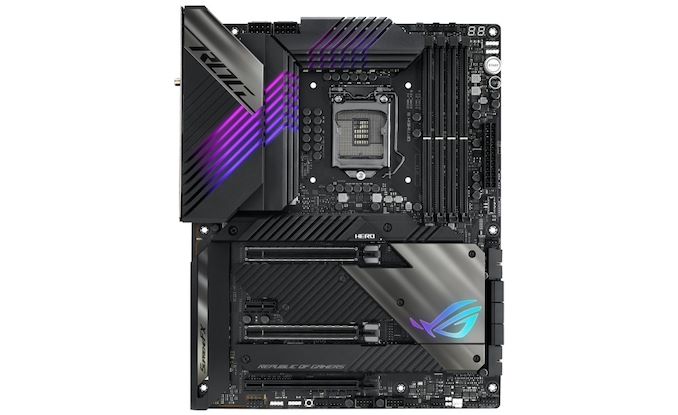
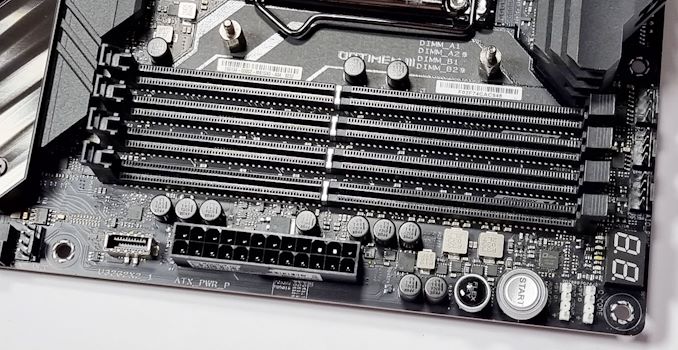
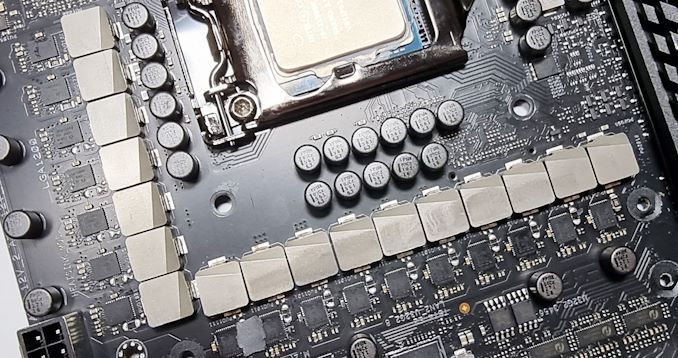
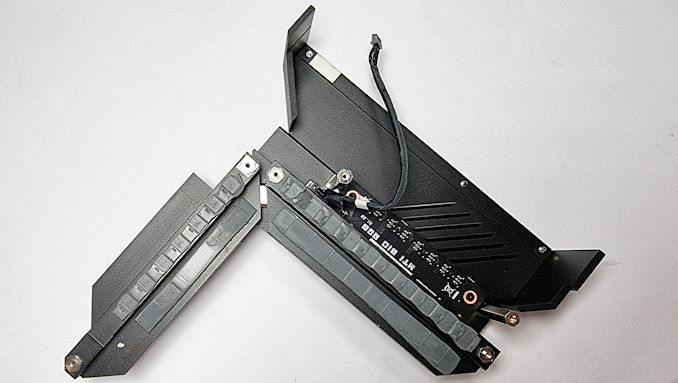
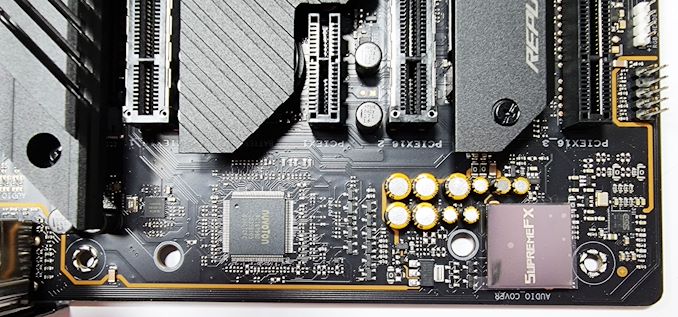

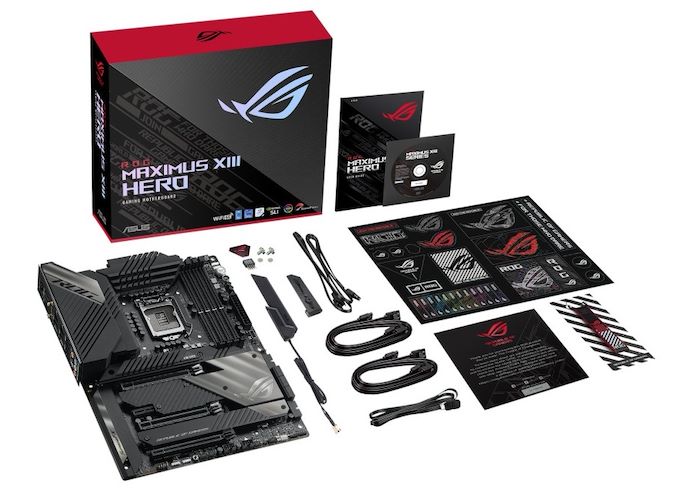








28 Comments
View All Comments
A5 - Friday, July 9, 2021 - link
$500 isn't mid-range by any stretch of the imagination, except in the wildest dreams of ASUS' CFO.shabby - Friday, July 9, 2021 - link
Lol indeed, wake up Gavin.Ian Cutress - Friday, July 9, 2021 - link
It's in ASUS' 'mid-range' 😉eastcoast_pete - Friday, July 9, 2021 - link
Which keeps many of us looking at manufacturers who haven't lost touch with reality. Now, if they'd throw in a 3060 for $ 1, I'd buy one in a heartbeat.shabby - Saturday, July 10, 2021 - link
Oh ok, guess my asus x570 gaming plus wifi is in the poor range section...$100 homeless range
$200 poor range
$300 low end
$500 mid range
$800 high end
$1000 baller range
lilkwarrior - Monday, July 12, 2021 - link
That's actually a pretty accurate scale. $500 being mid-range more than makes sense–especially with 4K-oriented workflows these motherboards are increasingly catering too. All prices of PC components are rising to also account for increased tariffs, demand, & so on.If you want a motherboard with Thunderbolt 4, multiple M.2 slots, & Wifi6E, you should absolutely expect a price around $500 these days.
Makaveli - Friday, July 9, 2021 - link
The AMD Hero's boards also in the same price range so not surprised. But I choose to be a hero to my wallet and choose a board in the $300-$350 price range. For me if i'm spending $500 on a motherboard it will be for a build using ECC memory.Exodite - Saturday, July 10, 2021 - link
Just got myself a Gigabyte B550 Vision D-P for that reason (ECC support) and it was half that. :)Looking at the current Intel and AMD platforms I see little reason to choose X570 over B550, you pretty much have to need the chipset PCIe 4.0, and none to choose Z590 over B560.
Pricing seem more out of hand on Intel than AMD though, generally speaking. There are decently priced X570 boards here in Sweden but Z590 is hard to get with reasonable specs sub-$500.
Destoya - Sunday, July 11, 2021 - link
I bought my Crosshair VI Hero for $249 new. It's only in the last couple of generations that these companies have decided to inflate the prices to ludicrous amounts.Spunjji - Monday, July 12, 2021 - link
They've cottoned on to that segment of users that think something is inherently better just because they spent more money on it 🤷♂️